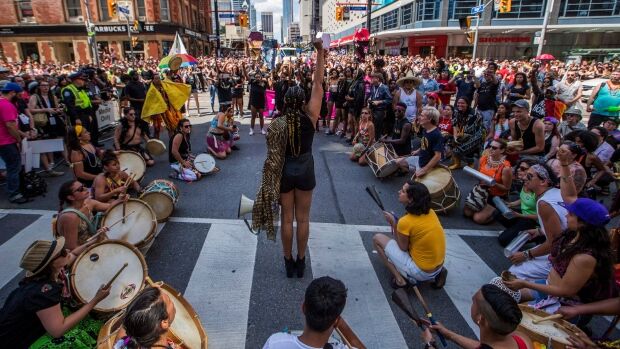Toronto police must be held accountable
This past July, Black Lives Matter (BLM) Toronto brought the Pride Parade to a stop. They had been named an honorary group at Pride and therefore were leading the festivities. After they halted the proceedings, they began to give a lecture about the history of Pride and how black people contributed to the cause in the past, calling out what they referred to as Pride’s anti-blackness. They then made a list of nine demands they wanted met by Pride Toronto before the parade could continue.
These demands called for continued space and support for black queer youth, self-determination for all community spaces at Pride, adequate funding for community stages, increased funding to Blockoroma, the reinstatement of the South Asian stage, a prioritization of hiring black transwomen, Indigenous people and others from vulnerable communities at Pride, more black deaf and hearing sign language interpreters, removal of police floats from the parade and a town hall organized with groups from marginalized communities. These demands were agreed to by Mathieu Chantelois, who was the executive director of Pride Toronto at the time. He then backtracked and stated that he simply signed just to get the parade moving. Members of Pride Toronto later approved these demands on January 17 at their Annual General Meeting.
One demand in particular received the most attention by far since the event took place—the removal of police floats from the parade. There were a lot of complaints about Black Lives Matter unfairly hijacking the parade and making it solely about them. There were also many cries regarding how banning the police was contrary to the spirit of Pride, seeing as people believed that it was about inclusivity. What a lot of these arguments are missing is that banning the police was ultimately about accountability and accessibility.
The demands made by BLM Toronto shine a light on the fact that Pride is inaccessible to many black people who occupy different intersections of identities. A lot of people who claim that BLM was hijacking the parade are missing two things. The first being that they had been invited as an honorary group as part of Pride’s attempt to be intersec-tional, and second, that the issues they highlighted should be of concern to the queer community.
Before this, BLM had been doing work on anti-black racism in Toronto through direct action. In March, they protested Toronto Police Services (TPS) and created a tent city in front of TPS headquarters, in response to a lack of criminal charges against the police officer who shot and killed Andrew Loku. Pride Toronto was well aware of these protests when they had invited them to be the honorary group, so to invite BLM despite having a history of anti-blackness and expecting silence was outrageous. Pride has been criticized for losing its political roots, and in this context, it seems as though inviting BLM was simply a way to appease critics, thereby tokenizing the group.
Suggesting that BLM hijacked the parade to promote their issues is simply a false argument. They are a group that is made up of all kinds of people including queer folk. For them and many other black queer people, we cannot separate our identities. Issues of racism should be of concern to the queer community as some are racialized. If an event meant to celebrate queerness ignores issues of race, then the celebration is a whitewashed version of queerness.
The demand that bans the police is about holding the TPS accountable. The Toronto Police Service has a tense relationship with the black community as police violence and brutality is a reality for many black Torontonians. They have systematically targeted black communities with policies like carding, and cases of police brutality towards black bodies are still rampant.
The fact of the matter is that some of the black people the police harass are queer, and for them to be proudly propped up in an event that is supposed to celebrate queerness is a slap in the face. And for police who are queer, this isn’t a question of choosing between two identities, as being an officer is not an identity in the same way that being black or queer is. The institution of the police itself has had a rough history with LGBTQ+ people, one that they only acknowledged recently. This ban is simply holding them accountable for their actions and saying, “If you bully us, then you can’t sit with us.”
Pride started as a riot against the police because of their harassment towards queer people, and just because one group of queer people feel as though they are free from police harassment doesn’t mean everyone does. And until that is achieved, the Toronto Police Service should not be allowed to march in Pride.
Image curtesy of the CBC.
